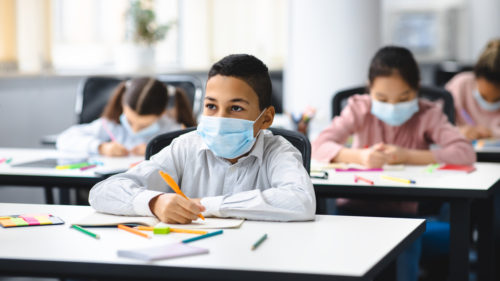
The Impact of COVID-19 on Children and What to Think About As We Move Forward
The masks are starting to come off, but the pandemic and the effects of it are still very much present in our lives. If we’ve learned anything over the last two years of loss and devastation, it’s that some effects will continue to show up for us long after we move forward from COVID-19.
The trauma of the pandemic has manifested itself in a variety of ways for all of us. For children, the combination of virtual schooling and lack of social interaction, compounded with the fear, crisis, and precautions inherent in the pandemic have resulted in distinct outcomes.
While every person’s experience has been different, some of the common results for adolescents have included lagging social skills, a toll on mental health, and activity apathy.
Social Skills
The alterations we have all undergone to make daily life safe – masks, social distancing, virtual learning – have hindered the opportunity to develop and practice social skills. Adolescence is a crucial time in our lives. Among other things, it’s when we continue to learn how to interact with others and develop our identity. With the lack of in-person opportunities to practice these skills, naturally, their development has been slowed or lags where it should be. For some children, it’s separation anxiety from their home life as they reacclimate to leaving their home and family during the day.
For others, it’s disruptive behaviors or a lack of social awareness. In instances where children do know how to respond to new situations, they’re rusty after a hiatus from these interactions.
What can you do to help your child?
Forbes offers insights on how parents can help their children. From reinforcement to modeling, practice is central to every aspect of social skill development.
Mental Health
The level of sustained trauma inflicted by the pandemic has impacted the wellbeing of innumerable people over the last two years, including many young people. In the Fall of 2021, Unicef cautioned that “Children and young people could feel the impact of COVID-19 on their mental health and well-being for many years to come.” From experiencing the virus firsthand to routines being turned on their head, each age group has faced its own losses and challenges that have resulted in different effects on their mental health. Each adolescent will have different needs and challenges as they progress on the path forward.
What can you do to help your child?
The CDC has put together a COVID-19 Parental Resources Kit comprised of insights, suggestions and resources separated by age group from early childhood to young adulthood.
Activity Apathy
We all faced it – the exhaustion and resistance to doing things outside of our home on the heels of stay at home orders and virtual life. Children were no different, and many are still dreading that sports practice or can barely make it through homework. It will take time and effort to unlearn the pandemic lifestyle and relearn the new normal lifestyle. As time continues to go by, monitor the frequency, intensity and duration of these instances to determine if seeking additional resources from your doctor or local CMO is the best next step.
What can you do to help your child?
Create schedules. Build in time for staying home, alongside out-of-home activities. Gradually start changing the amounts of time so they are able to ease back into a pre-pandemic level of activity.
—
The path forward will be a long one and there is no clear answer or solution to any impacts of the pandemic – but by acknowledging the ways that these two years can show-up in children (and talking to them about it), we can help play a crucial role in helping them emerge from it.